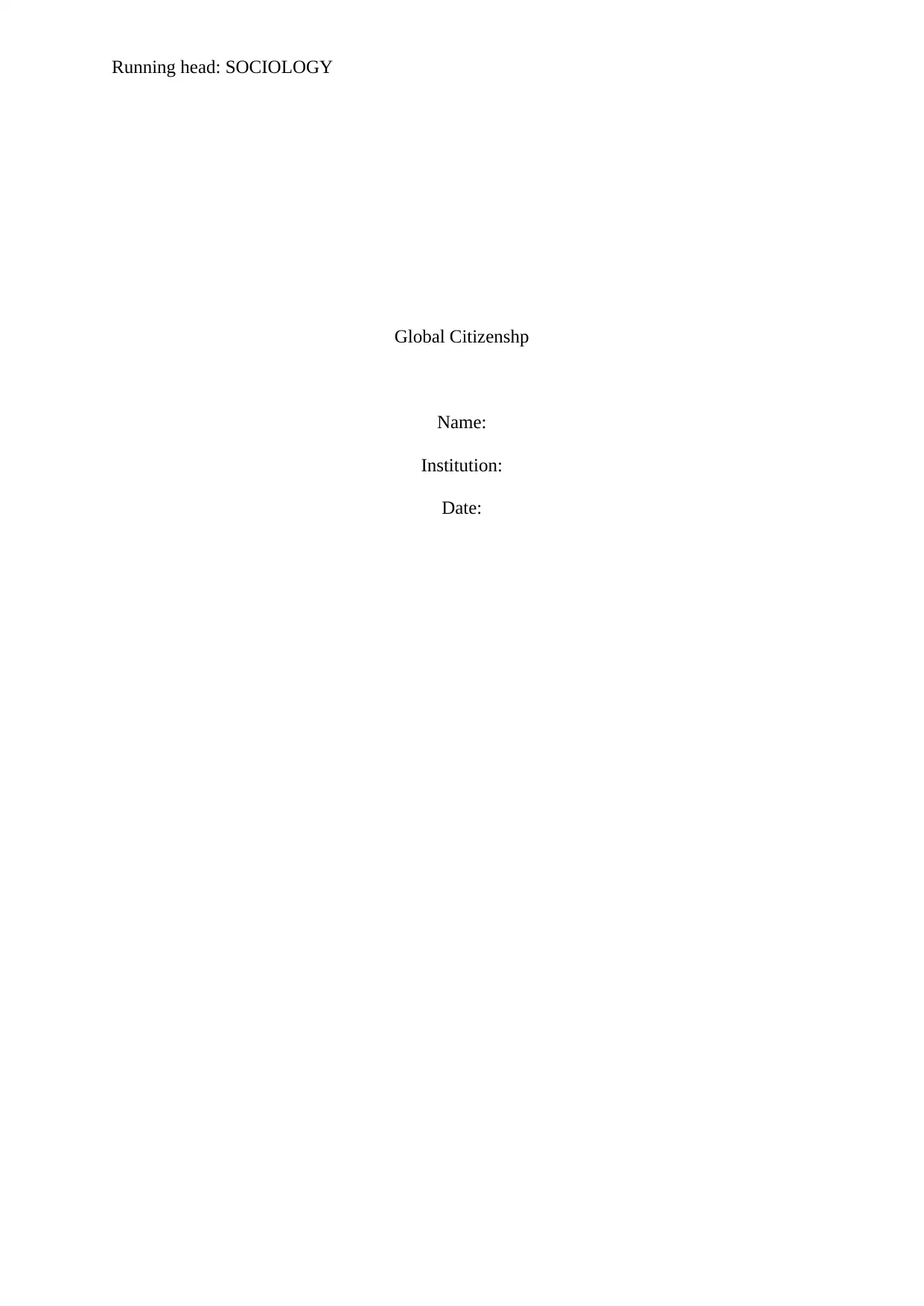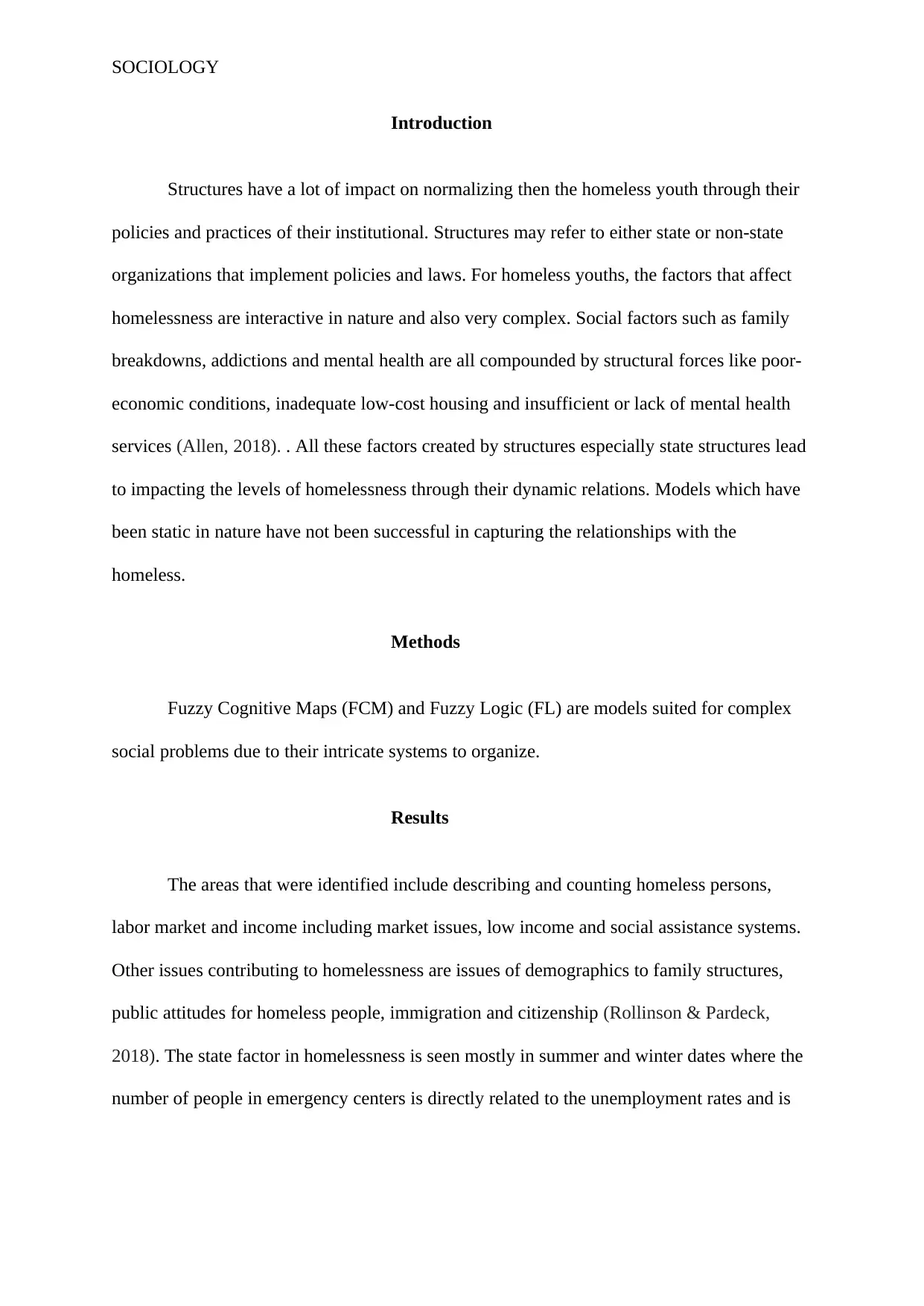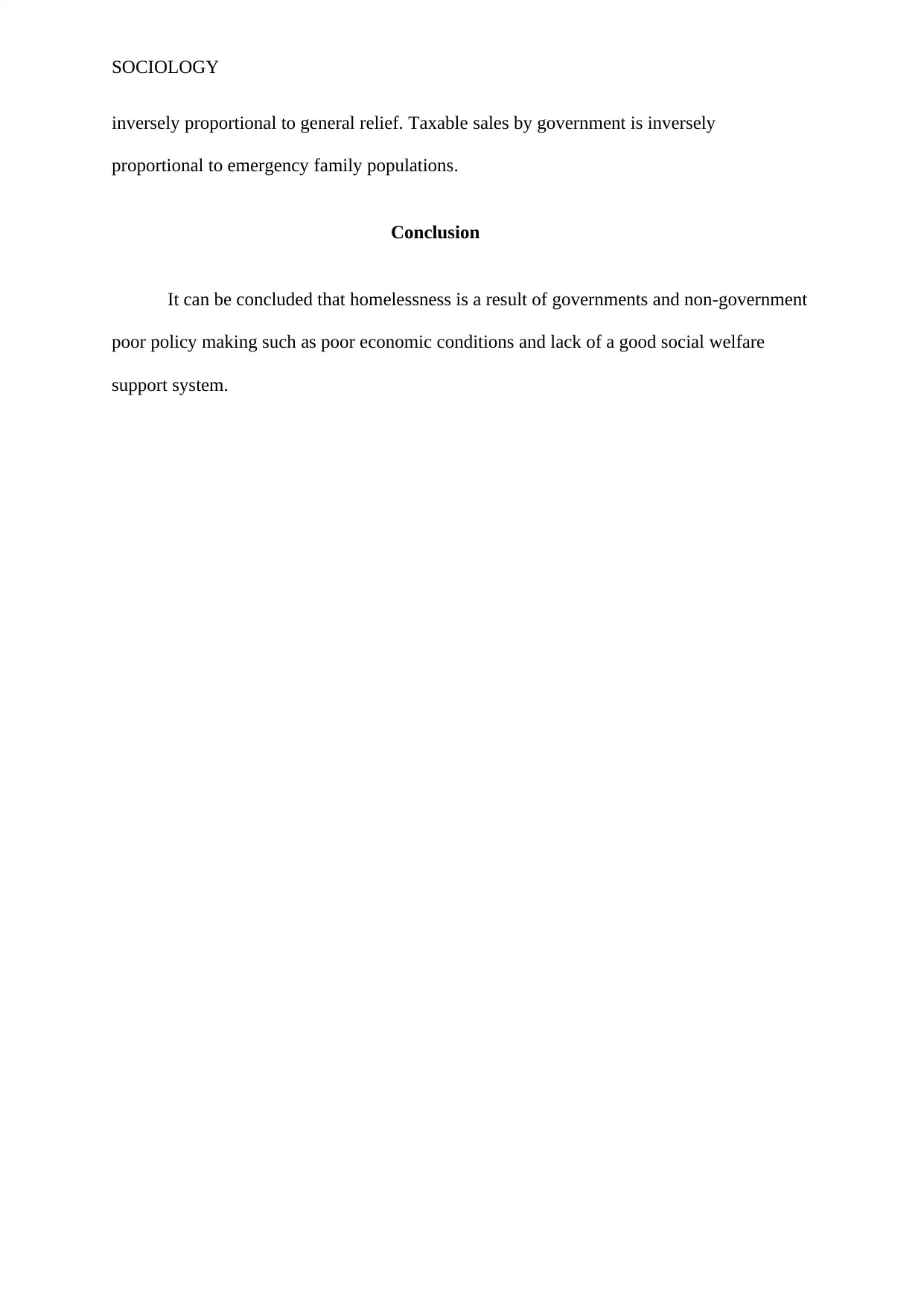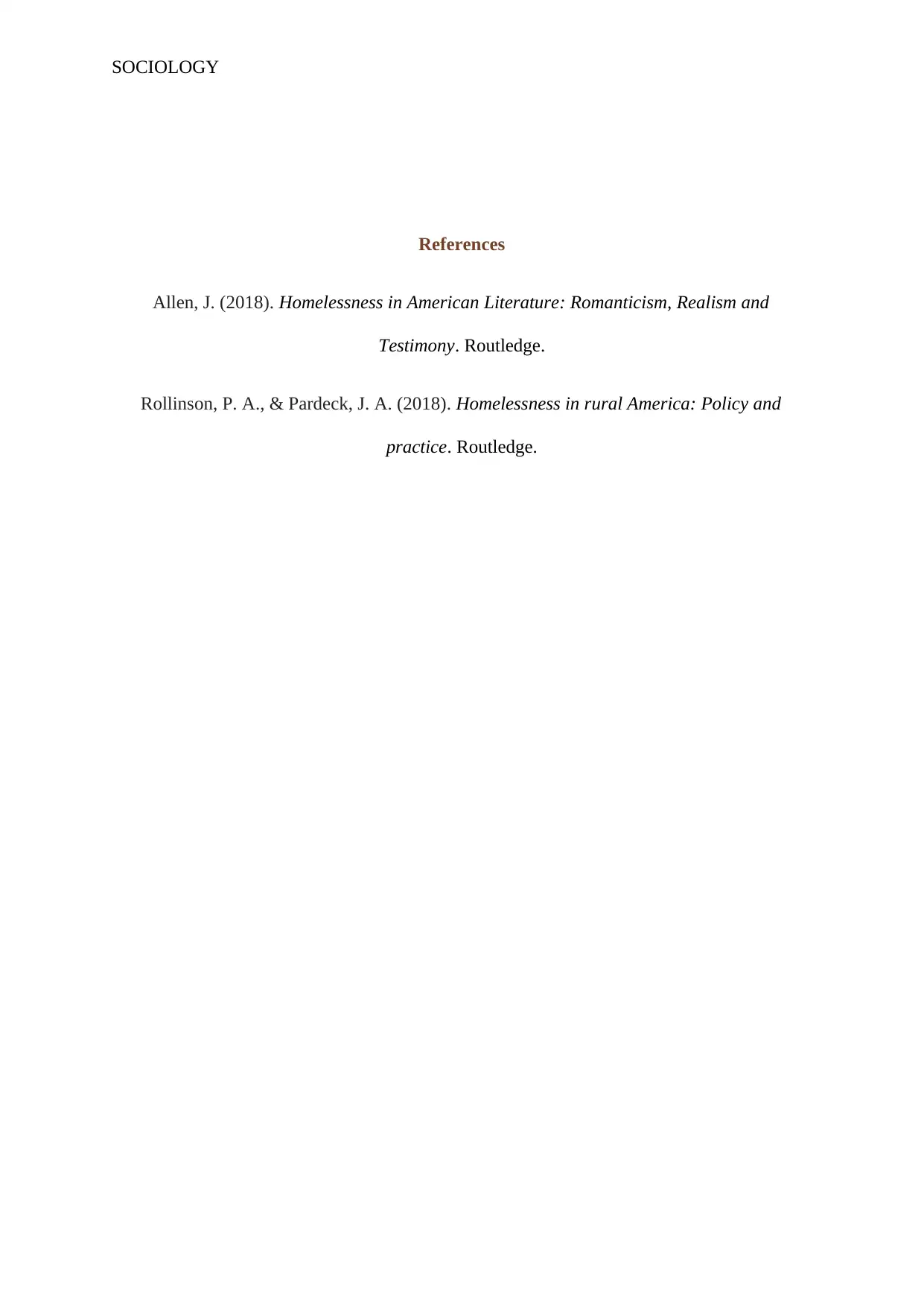Sociology: Analysis of Homelessness, Structures, and Policies
VerifiedAdded on 2022/10/18
|4
|364
|16
Report
AI Summary
This report explores the sociological aspects of homelessness, focusing on the impact of structures and policies. It examines the factors contributing to homelessness, including family breakdowns, mental health issues, and economic conditions. The report utilizes Fuzzy Cognitive Maps (FCM) and Fuzzy Logic (FL) to analyze complex social problems and identifies key areas such as labor market dynamics, social assistance systems, and demographics. It highlights the role of state structures and their influence on homelessness, particularly in relation to unemployment rates and government spending. The conclusion emphasizes that homelessness results from poor policymaking and inadequate social welfare support systems. The report references relevant literature to support its findings.
1 out of 4










![[object Object]](/_next/static/media/star-bottom.7253800d.svg)